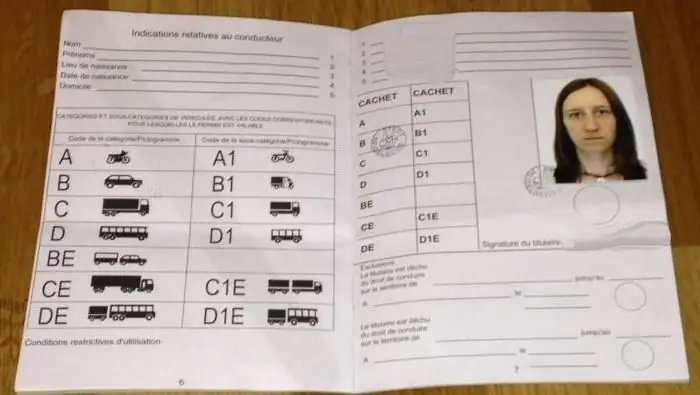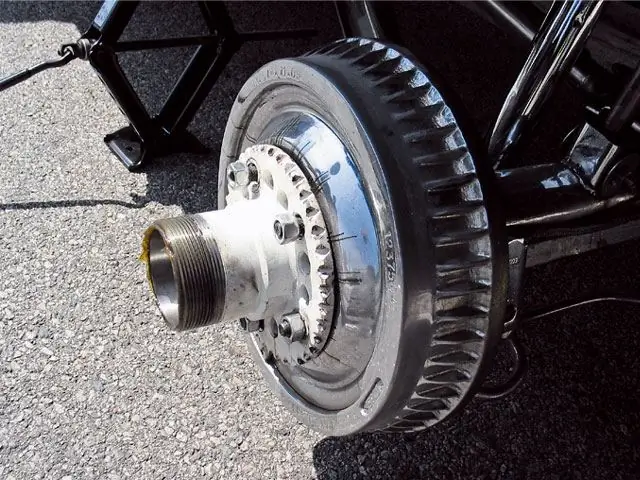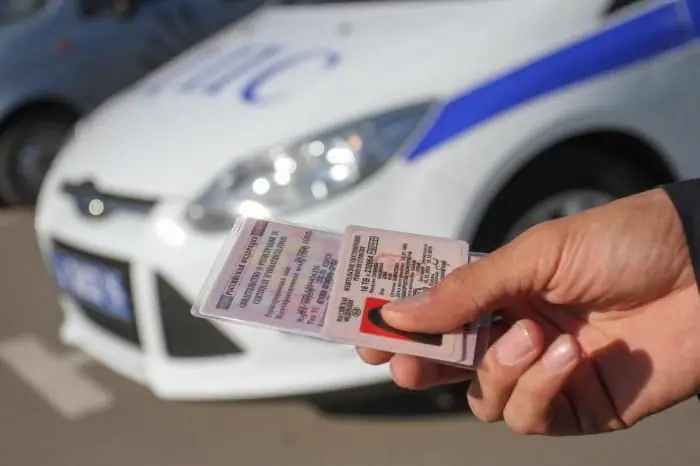2025 Author: Erin Ralphs | [email protected]. Last modified: 2025-01-22 21:14:09
Special high-speed sections of roads have their own rules for public transport. Almost every driver knows that a motorway is a section of the roadway designed for the movement of cars at high speed. At its level, it has no intersections with other roads, paths and pedestrian crossings.
The motorway is defined by at least two lanes in each direction of traffic and a wide shoulder for emergency stops. Roads in opposite directions are separated from each other by special barriers (concrete blocks, metal structures, nets, fenders or other structures). At the beginning and at the end of this carriageway there are special lanes that provide for the acceleration and deceleration of vehicles.

Road sign
The expressway requires compliance with certain rules that every driver of a vehicle should know. They begin to act immediately after the sign "Motorway", itis designated by numbering 5.1 in the rules of the road. You can distinguish it by two separated white stripes on a green background and a bridge above them.
The end of the high-speed section of the carriageway is marked with the same sign, but crossed out with a red stripe diagonally. It is numbered 5.2 in the rules of the road and is referred to as the "End of the Motorway". The green color of the traffic sign is used only for high-speed sections of the road, which excludes the possibility of confusing it with any other.

Entry restrictions
Motorway traffic requires increased attention from vehicle drivers, especially due to the high speed of traffic. Not all vehicles are allowed to travel on this stretch of road. Movement restrictions apply to:
- animals and pedestrians;
- cyclists;
- mopeds;
- self-propelled vehicles and tractors;
- horse-drawn carts of any kind;
- any vehicle whose speed cannot exceed 40 km/h;
- heavy trucks over 3.5 tons;
- any vehicle moving for training purposes.
Pedestrians and animals can cross to the other side through special crossings located strictly underground or above the roadway.

Basic rules to follow when driving on the expressway
Motorway - a section of the road where the speed allowed by the rulesis 110 km/h, in other countries this value can be increased up to 150 km/h. A car with a trailer must move at a speed of 90 km/h. For vehicles in the back of which there are people, the speed limit is no more than 60 km / h. If any type of vehicle is being towed on the motorway, the speed must be 50 km/h.
A motorway is a route where drivers of vehicles are prohibited from reversing and stopping outside special places, which are indicated by signs. Stopping public transport is completely excluded. Also, you can not turn around and drive into technological gaps. The only exceptions are public transport and road services equipped with orange beacons, as well as cars with special signals.
A motorway is a high-speed road that requires the driver to keep the vehicle closer to the right edge while driving. This is spelled out in the rules of the road under paragraph 9.4. Its observance is not affected by the location of the carriageway and the presence of settlements along the road.

The world's first highways: historical background
For the first time in the world, such a section of the road was opened in Italy on September 21, 1924. Its length was approximately 85 km. The first motorway connected the cities of Varese and Milan. In this country, over the next fifteen years, another five hundred kilometers of high-speed sections of roads were built.
Later, such a highway appeared in Germany, and after the end of the Second World War, the construction of these highways was also taken up in Great Britain and France. After 1950, expressways began to appear actively in the United States of America.
By 2015, China had become the leader among all countries in total mileage and the speed of construction of highways. This is a network of roads, which in total amounted to 111,950 kilometers. Almost half of them were created within the last five years.
In the Russian Federation, there are very few high-speed sections of tracks. Their construction began back in the days of the Soviet Union, but is still rather poorly developed.
Construction of high-speed roads
The creation of a high-speed section of the route requires large financial investments. One kilometer of an expressway in Germany costs about 27 million euros, the price in our country is approximately comparable. The cost of building the roadbed itself is only a quarter of the total cost, that is, about 7 million euros.
The main costs occur during planning and building permits. Only independent examinations require almost 6 million euros, and official checks and conclusions of officials cost about ten million in the same currency. An additional €5 million is required for related items such as road signs, landscaping, traffic control systems, noise barriers, etc.

Highways in the Russian Federation
The main high-speed sections of roads start in Moscow and belong to federal highways. The sign "motorway" in our country can be found on the following roads:
- M2 Crimea;
- M4 "Don";
- WHSD (St. Petersburg);
- M9 "B altic";
- M11 Moscow - St. Petersburg;
- KAD (St. Petersburg);
- Р384 (Kemerovo region).
Small sections with permitted high speed are also on other roads. If you say in your own words what a highway is in the Russian Federation, then this is a section of the road with a high permitted speed and its own specific rules. They must be observed for your own and others' safety. Therefore, every driver of a vehicle should be extremely careful while driving on the highway.
Recommended:
Category B1 - what is it? New driving license categories

Recently there have been numerous amendments related to categories of driver's licenses. The introduction of new subcategories has raised numerous questions from drivers. Why category B1 was needed, what it is, for what purpose it was adopted, and what changes it led to, we will consider in the article
Knocking in the rear wheel when driving: possible causes of failure

Modern car is a complex of complex systems and mechanisms. One of the most important components of any car is the suspension. It is she who provides the connection between the wheels and the car body. There are several suspension schemes, however, if any of them fail, the driver may hear a characteristic knock in the rear wheel while driving. The reasons for this phenomenon may be different. In today's article, we will quarrel why the rear wheel knocks while driving and what can be done about it
Categories of driving license. New driving license categories

More and more people in our country are thinking about getting a driver's license. According to statistics, every year the number of motorists is increasing. Fortunately, today you don’t need much to make this dream come true: only desire and certain knowledge and skills. If you have not yet decided on the category that you want to open, then in this article you will find detailed answers to the questions, what categories of driving licenses exist and what they allow you to manage
Driver's license categories. Deciphering the categories of driving licenses in Russia

Categories of a driver's license - the type of transport that the owner of this document is allowed to drive. To date, there are six main and four additional categories. There are also special varieties that allow you to drive vehicles with a trailer
How to get international driving license? Where can I get international driving license in Moscow and St. Petersburg?

The article contains a description of an international driver's license, the procedure for issuing it in a number of cities in the Russian Federation, a list of documents required to obtain an IDL

